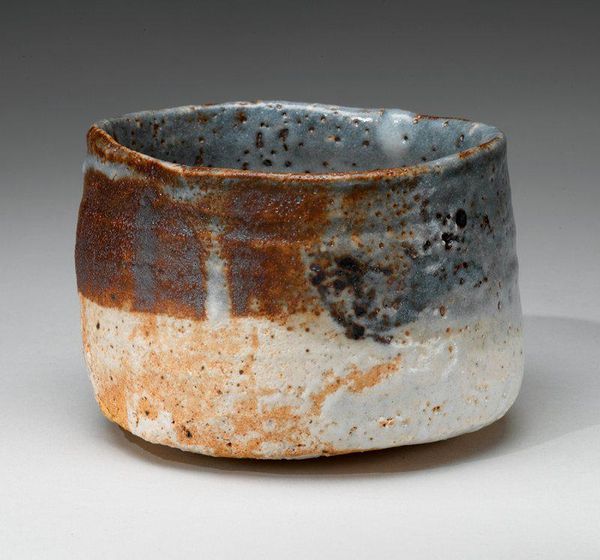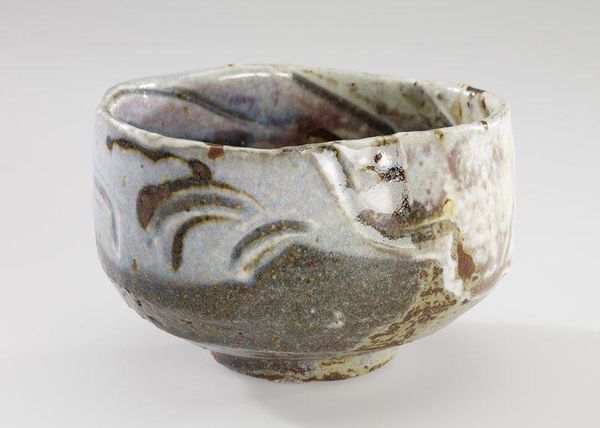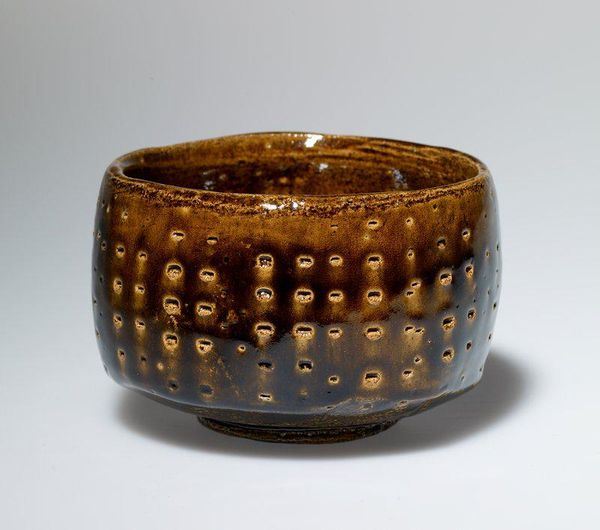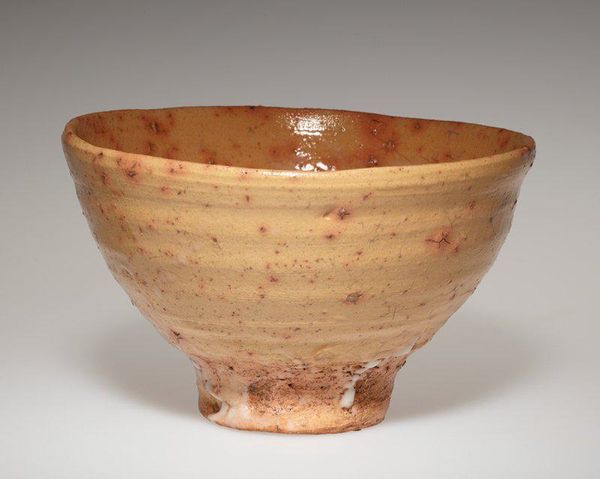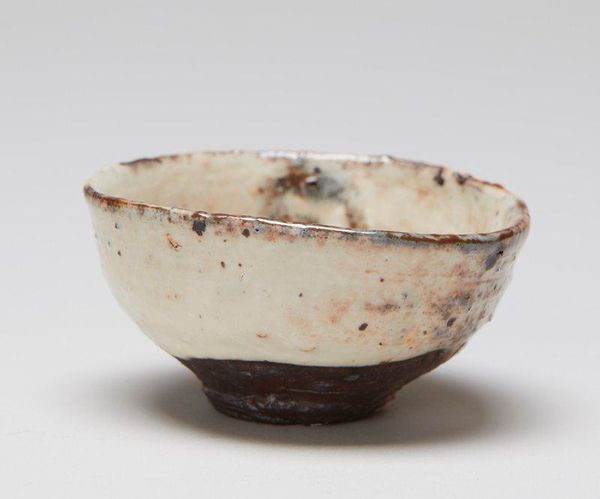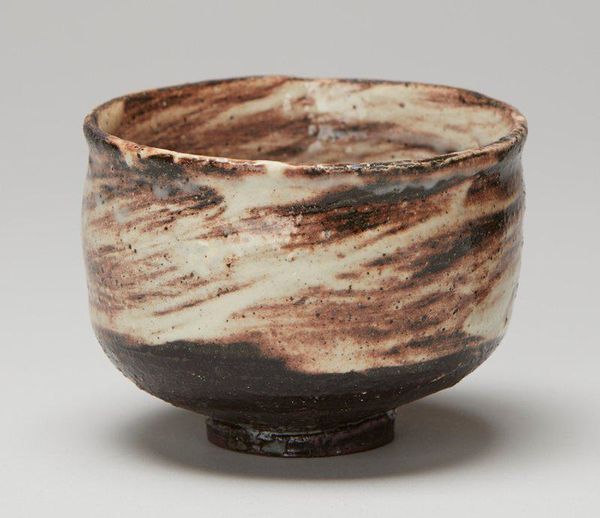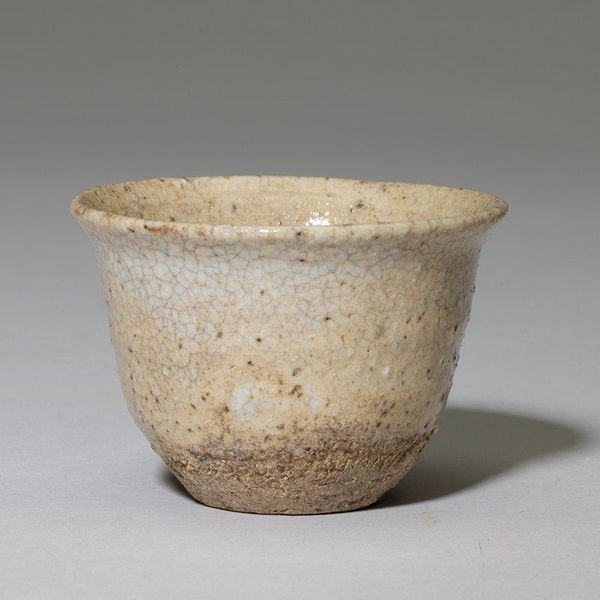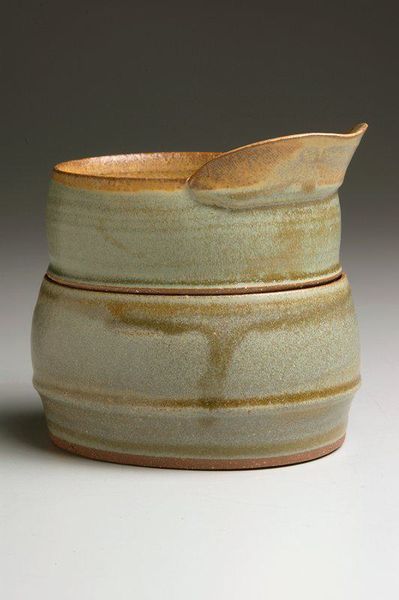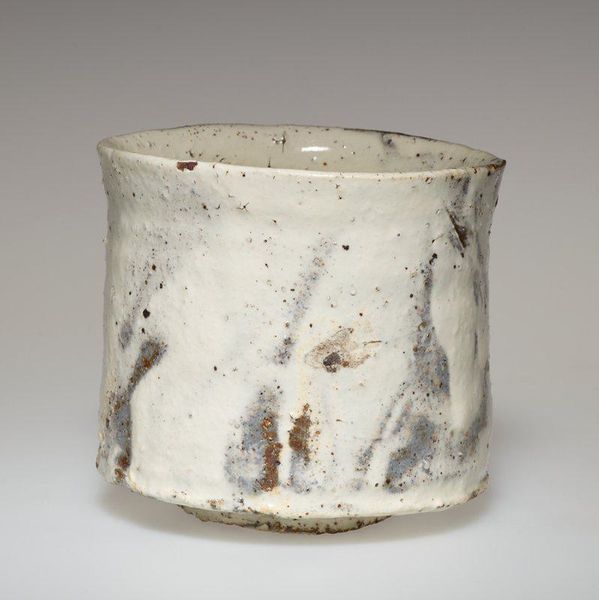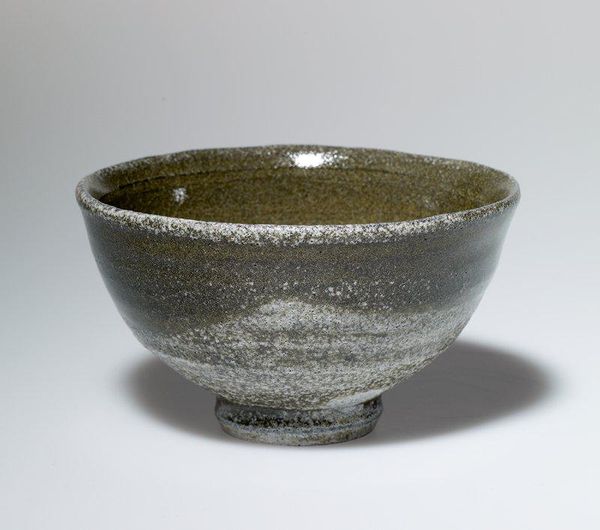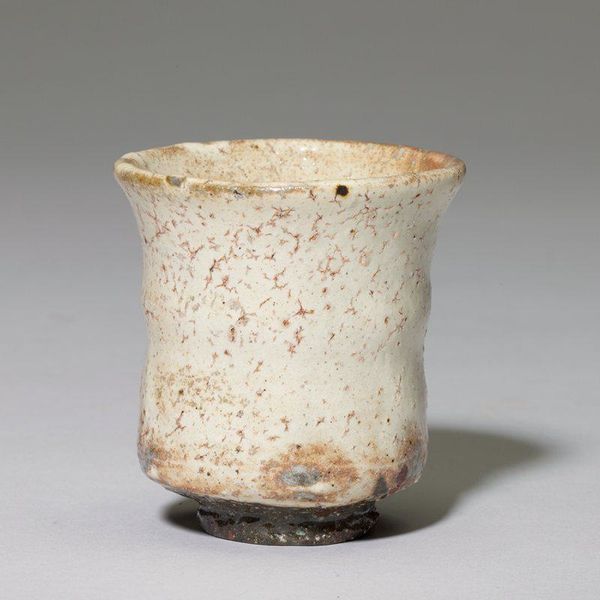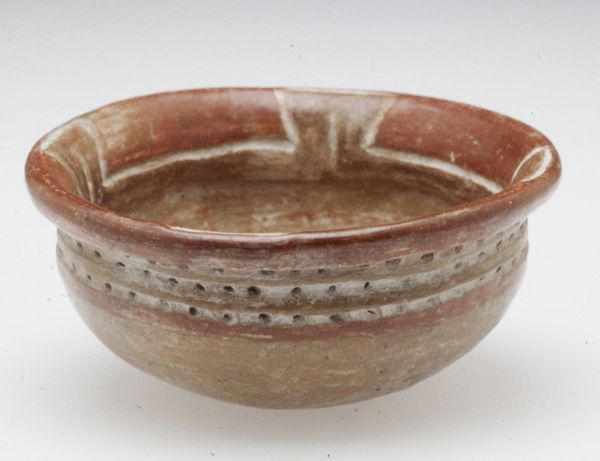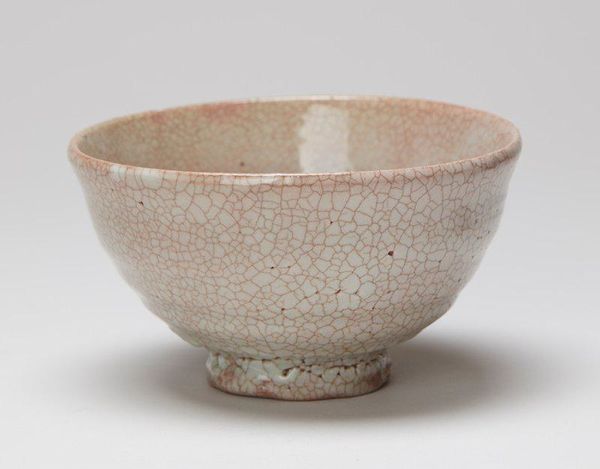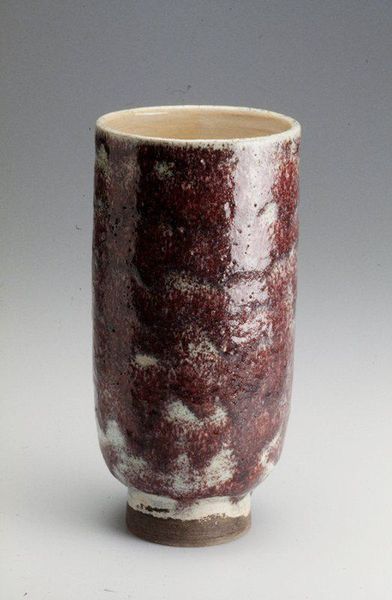
ceramic
#
asian-art
#
ceramic
#
abstract
#
stoneware
Dimensions: 3 1/4 x 5 x 4 7/8 in. (8.26 x 12.7 x 12.38 cm)
Copyright: No Known Copyright
Editor: We're looking at a 20th-century tea bowl, or chawan, by Takahashi Rakusai IV. It's stoneware, with these really beautiful, uneven glazes. The surface is quite earthy; how would you interpret its cultural significance? Curator: This chawan is interesting to consider within the context of the Japanese tea ceremony, or chanoyu. It's more than just drinking tea; it's a ritual steeped in philosophy and history. We should ask: who had access to these rituals? Whose stories are being centered? And whose are being marginalized? The rough, asymmetrical aesthetic, called wabi-sabi, embraces imperfection and transience. Editor: I can see that! So the imperfections aren’t really imperfections at all? Curator: Precisely. It can be interpreted as a quiet rebellion against the perfect, mass-produced objects that dominate consumer culture, even back in the 20th century, which is important because after World War II Japan was trying to grapple with both the old world and this rising new one. How does appreciating these perceived flaws in the chawan relate to how we accept, or don't accept, human differences and cultural variations? Editor: That makes me think about accessibility, and the way the bowl feels like it was shaped by hand, giving it more connection to its maker, to the earth… Curator: Right! How can this ceramic vessel remind us to resist systems that devalue craftsmanship and cultural specificity? What does this bowl tell us about class, gender, and power dynamics within Japan in the 20th century, and how those hierarchies manifest themselves within craft? Editor: I didn’t expect to consider all that from one small bowl. That context is very thought-provoking, thanks. Curator: My pleasure; hopefully this encourages more critical viewing beyond aesthetics alone!
Comments
No comments
Be the first to comment and join the conversation on the ultimate creative platform.
